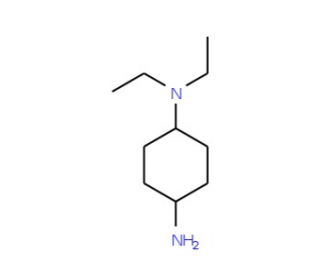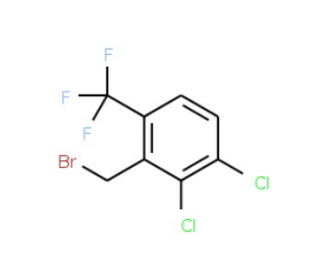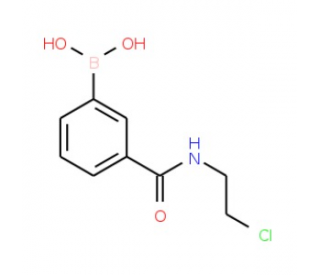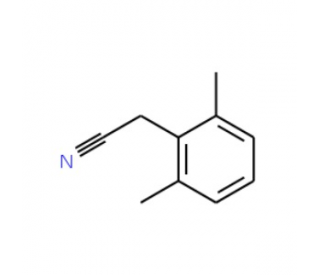详细说明
Species Reactivity
Human
Specificity
Detects human MIS/AMH in ELISAs.
Source
Monoclonal Mouse IgG 1 Clone # 805513
Purification
Protein A or G purified from hybridoma culture supernatant
Immunogen
Mouse myeloma cell line NS0-derived recombinant human MIS/AMH
Leu19-Gln450
Accession # P03971Formulation
Lyophilized from a 0.2 μm filtered solution in PBS with Trehalose. *Small pack size (SP) is supplied as a 0.2 µm filtered solution in PBS.
Label
Unconjugated
Applications
Recommended
ConcentrationSample
Western Blot
2 µg/mL
See below
Please Note: Optimal dilutions should be determined by each laboratory for each application. are available in the Technical Information section on our website.
Data Examples
Western Blot | Detection of Human MIS/AMH by Western Blot. Western blot shows lysates of NTera‑2 human testicular embryonic carcinoma cell line and LNCaP human prostate cancer cell line. PVDF membrane was probed with 2 µg/mL of Mouse Anti-Human MIS/AMH Monoclonal Antibody (Catalog # MAB17372) followed by HRP-conjugated Anti-Mouse IgG Secondary Antibody (Catalog # ). A specific band was detected for MIS/AMH at approximately 75 kDa (as indicated). This experiment was conducted under reducing conditions and using . |
Preparation and Storage
Reconstitution
Reconstitute at 0.5 mg/mL in sterile PBS.
Shipping
The product is shipped at ambient temperature. Upon receipt, store it immediately at the temperature recommended below. *Small pack size (SP) is shipped with polar packs. Upon receipt, store it immediately at -20 to -70 °C
Stability & Storage
Use a manual defrost freezer and avoid repeated freeze-thaw cycles.
12 months from date of receipt, -20 to -70 °C as supplied.
1 month, 2 to 8 °C under sterile conditions after reconstitution.
6 months, -20 to -70 °C under sterile conditions after reconstitution.
Background: MIS/AMH
Müllerian inhibiting substance (MIS), also named anti-Müllerian hormone (AMH), is a tissue-specific TGF-beta superfamily growth factor. Its expression is restricted to the Sertoli cells of fetal and postnatal testis, and to the granulosa cells of postnatal ovary (1). The human MIS gene encodes a 553 amino acid residue (aa) prepropeptide containing a signal a sequence (1-24), a pro-region (25-455), and the carboxyl-terminal bioactive protein (446-553) (2-4). MIS is synthesized and secreted as a disulfide-linked homodimeric pro-protein. Proteolytic cleavage is required to generate the N-terminal pro-region and the C-terminal bioactive protein, which remain associated in a non-covalent complex. Recombinant C-terminal MIS has been shown to be bioactive. However, the complex with the N-terminal pro-region showed enhanced activity (3, 5). The C-terminal region contains the seven canonical cysteine residues found in TGF-beta superfamily members. These cysteine residues are involved in inter- and intra-molecular disulfide bonds, which forms the cysteine knot structure. Human and mouse MIS share 73% and 90% aa sequence identity in their pro-region and C-terminal region, respectively. MIS induces Mullerian duct (female reproductive tract) regression during sexual differentiation in the male embryo (6). Posnatally, MIS has been shown to regulate gonadal functions (1). MIS inhibits Leydig cell proliferation and is a regulator of the initial and cyclic recruitment of ovarian follicles. MIS has also been found to have anti-proliferative effects on breast, ovarian and prostate tumor cells (7-9).
Like other TGF-beta superfamily members, MIS signals via a heteromeric receptor complex consisting of a type I and a type II receptor serine/threonine kinase. Depending on the cell context, different type I receptors (including Act RIA/ALK2, BMP RIA/ALK3, and BMP RIB/ALK6) that are shared by other TGF-beta superfamily members, have been implicated in MIS signaling (10-12). In contrast, the type II MIS receptor (MIS RII) is unique and does not bind other TGF-beta superfamily members. Upon ligand binding, MIS RII recruits the non-ligand binding type I receptor into the complex, resulting in phosphorylation the BMP-like signaling pathway effector proteins Smad1, Smad5, and Smad 8 (10-12).
References:
Teixeira, et al. (2001) Endocrine Rev. 22:657.
Pepinsky, R.et al. (1988) J. Biol. Chem. 263:18961.
Wilson, C.A. et al. (1993) Mol. Endocrinol. 7:247.
Kurian, M.S. et al. (1995) Clin. Cancer Res. 1:343.
Nachtigal, J.S. and H.A. Ingraham (1996) Proc. Natl. Acad. Sci. USA 93:7711.
MacLaughlin, D.T. et al. (1991) Methods Enzymol. 35:358.
Laurich, V.M. et al. (2002) Endocrinology 143:3351.
McGee, E.A. et al. (2001) Biol. Reprod. 64:293.
Segev, D.L. et al. (2002) Proc. Natl. Acad. Sci. USA 99:239.
Josso, N and N. diClemente (2003) Trends Endo. Met. 14:91.
Clarke, T.R. et al. (2001) Mol. Endocrinol. 15:946.
Visser, J.A. (2003) Mol. Cell. Endocrinol. 211:65.
Long Name:
Mullerian-inhibiting Substance/Anti-Mullerian Hormone
Entrez Gene IDs:
268 (Human); 11705 (Mouse)
Alternate Names:
AMH; MIF; MIS; Muellerian hormone; muellerian-inhibiting factor; muellerian-inhibiting substance; Mullerian hormone; Mullerian inhibiting factor; Mullerian inhibiting substance











 粤公网安备44196802000105号
粤公网安备44196802000105号